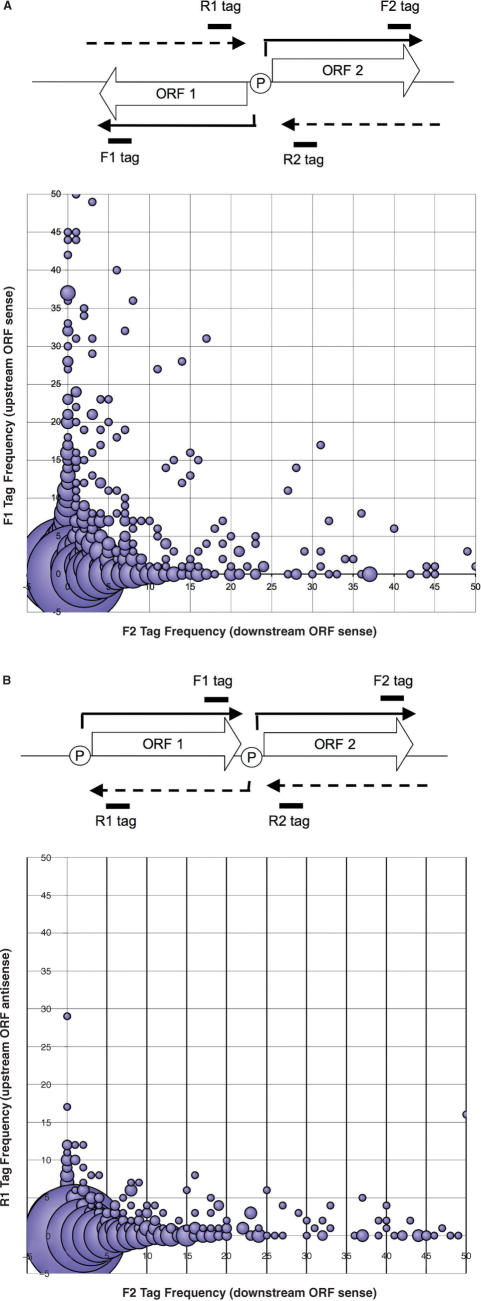Figure 2.
Examining the role of chromatin structure in antisense transcription. The total pool of ORFs used in Figure 1 was restricted to investigate only the adjacent ORFs in the genome; ORFs were considered neighbors if the distance between them was ≤250 bp. Two categories of neighboring ORFs were identified: head-to-head ORFs that are oriented in opposite directions on the contig [divergently transcribed ORFs, as shown on the top panel of (A)], and head-to-tail ORFs that are oriented in the same direction on the contig (B, top panel); SAGE tags indicative of divergent transcription on the chromosomal segment were compared: (A) For head-to-head-oriented neighboring genes, frequency of forward (sense) tags of both genes was evaluated. The graph represents the relationship between the frequency of forward (sense) tags of ORF2 (F2 tag) and forward (sense) tags of ORF1 (F1 tag). (B) For head-to-tail-oriented neighboring genes, frequency of forward (sense) tags of one gene and reverse (antisense) tags of another was evaluated. The graph represents the relationship between the frequency of forward (sense) tags of ORF2 (F2 tag) and reverse (antisense) tags of ORF1 (R1 tag).

